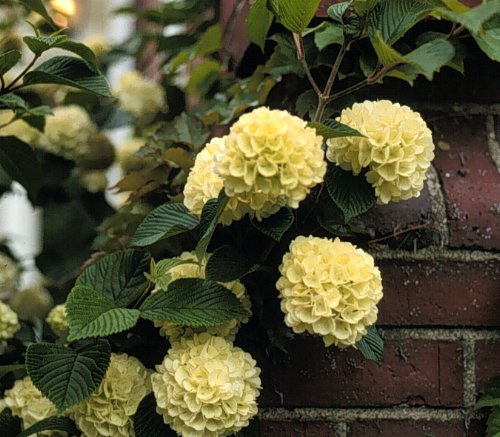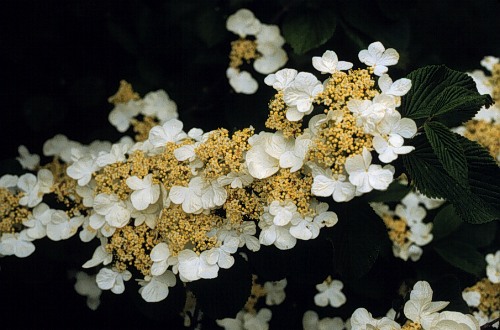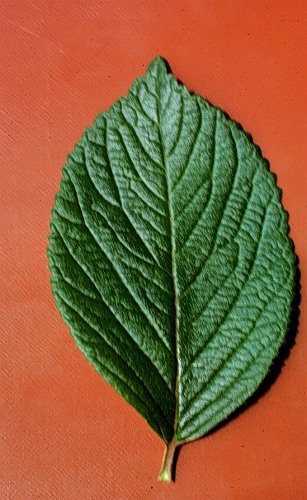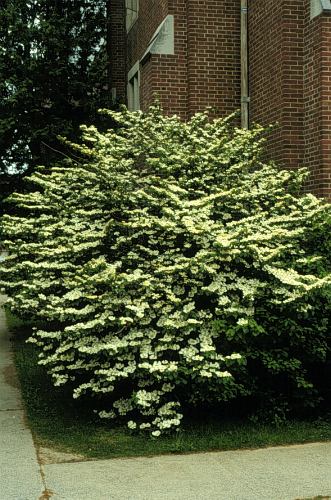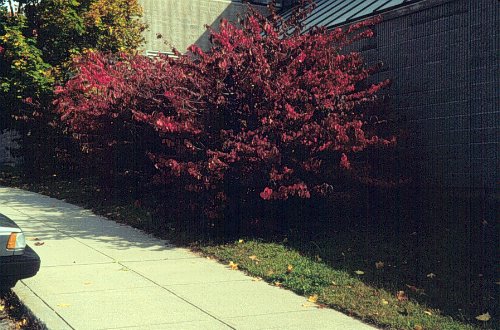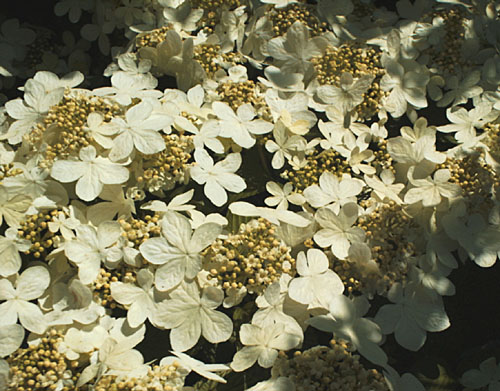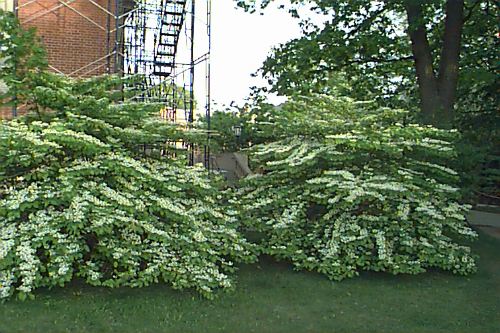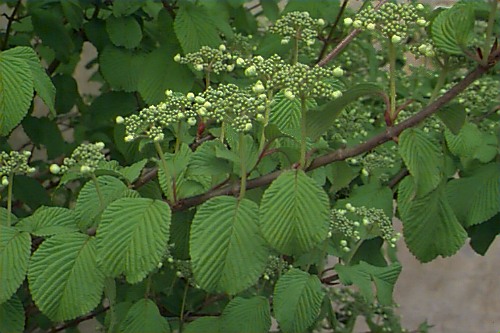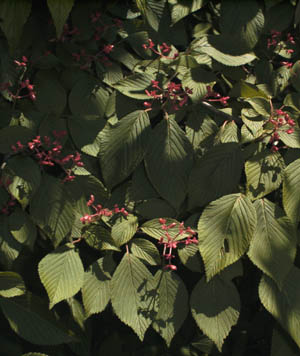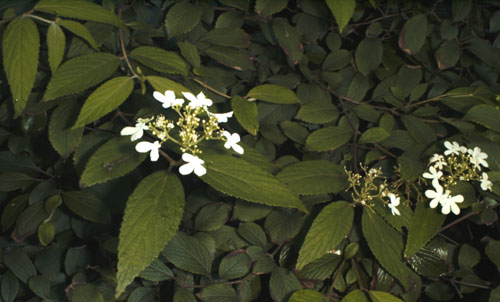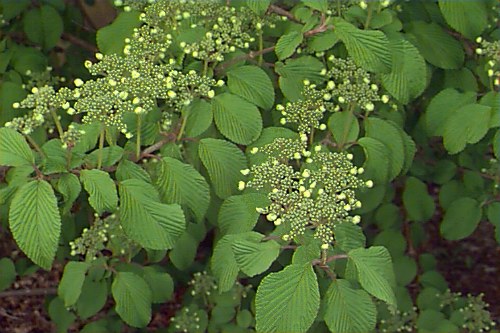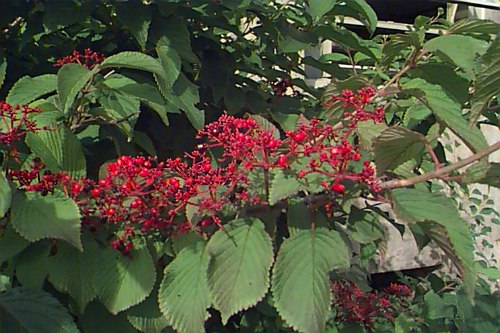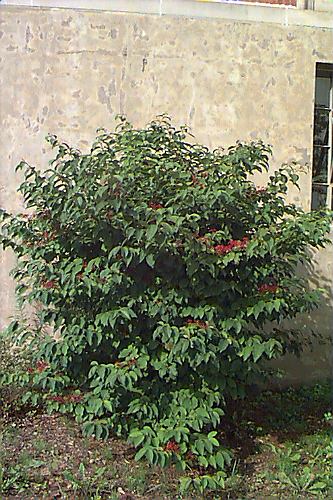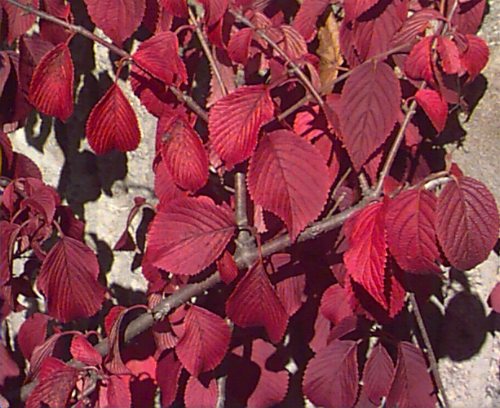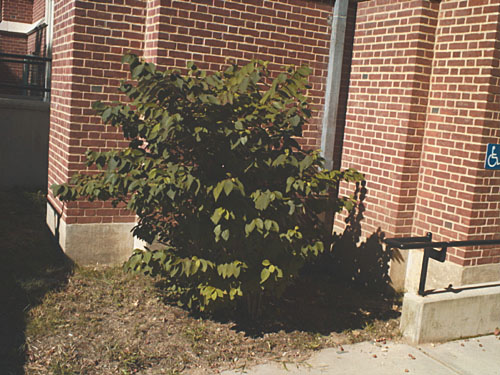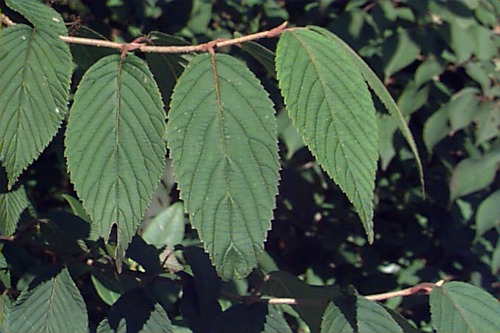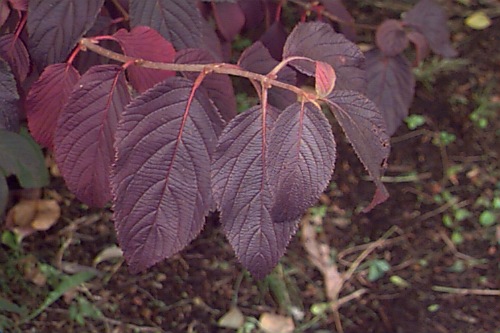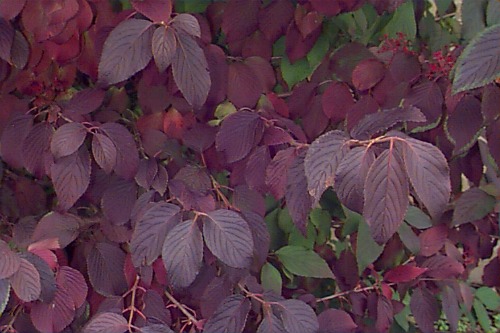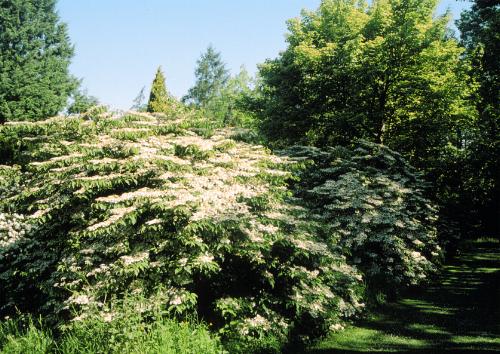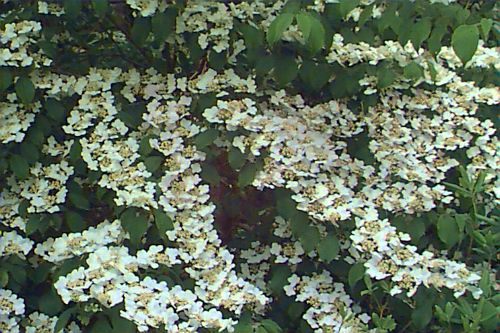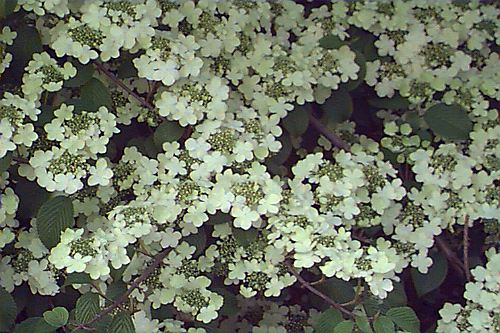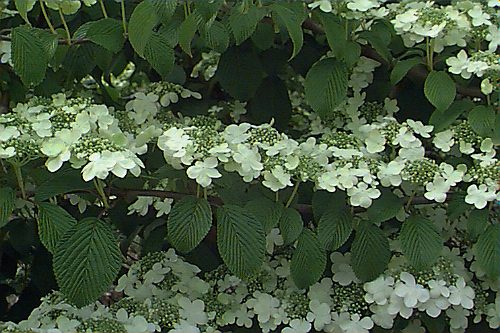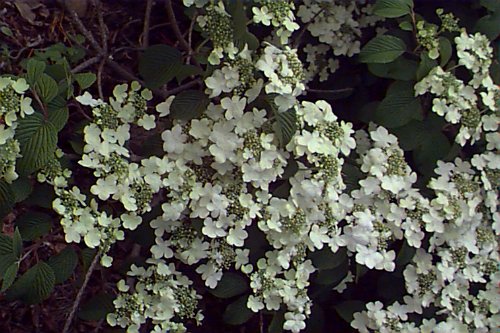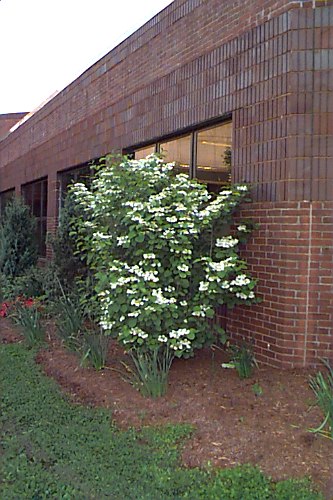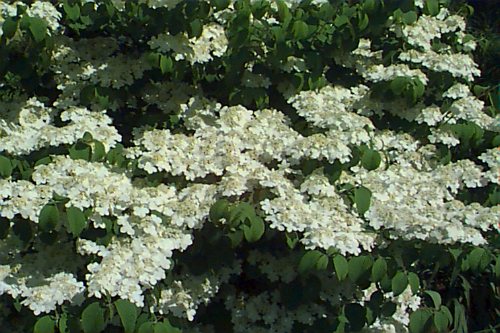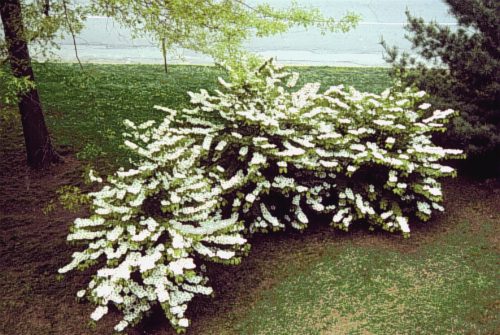Viburnum plicatum var. tomentosum
Doublefile Viburnum
Caprifoliaceae
ExpandSpecial Note: This profile page covers both Viburnum plicatum and Viburnum plicatum var. tomentosum. These plants are identical in most respects, except V. plicatum bears clusters of solely sterile flowers 2-3 weeks later than V. p. var. tomentosum. The flat-topped flower clusters of var. tomentosum-types generally feature a ring of large, sterile florets that surround the central mass of small, fertile flowers.
Habitat
- native to China and Japan
- zone 5
Habit and Form
- a deciduous medium-sized shrub
- multistemmed
- 8' to 10' tall with a wider width
- horizontal branching gives a layered appearance
- broad rounded form
- medium texture
- medium growth rate
Summer Foliage
- deciduous, simple leaves
- opposite leaf arrangement
- ovate leaf shape, 2" to 4" in length and up to 2" wide
- pointed apex and rounded leaf base
- serrated leaf margin
- 8 to 12 pairs of veins
- pubescent underside
- dark green leaf color
- leaves emerge in early spring
Autumn Foliage
- reddish purple fall color
Flowers
- white flowers
- individual flowers form a large flat-topped cyme
- cymes are composed of showy infertile flowers and unshowy fertile flowers
- sterile flowers surround fertile flowers
- up to 4" in diameter
- blooms in May
- no fragrance
Fruit
- small, egg-shaped drupe
- red maturing to black
- matures August
- birds love fruit
Bark
- gray-brown color
- young stems are tomentose
- orange lenticels
- fishbone pattern to branching
- 2 types of buds: vegetative and reproductive
- vegetative buds are naked and pubescent
- flower buds are valvate, hairy and appressed to stem
Culture
- transplants easily
- prefers moist, well-drained soil
- soil adaptable
- full sun to partial shade
Landscape Use
- shrub borders
- for flowers
- mass plantings
- for fruiting effect
- to attract birds
- specimen
- fall color
Liabilities
- none serious
ID Features
- vegetative buds are naked and pubescent
- flower buds are valvate, hairy and appressed to stem
- small, black, egg-shaped drupe
- cymes are composed of showy infertile flowers and unshowy fertile flowers
- sterile flowers surround fertile flowers
- 8' to 10' tall with a wider width
- horizontal branching gives a layered appearance
Propagation
- by cuttings
- by seed
Cultivars/Varieties
Various cultivars are assigned to either Viburnum plicatum and Viburnum plicatum var. tomentosum. For the purpose of simplicity, all are listed here under V. p. var. tomentosum. In general, the only difference between the two types are the slightly later bloom period of the var. tomentosum-types and the rounded balls of sterile flowers found on V. plicatum (these result in little or no fruit). The flower heads of var. tomentosum-types tend to be "lacecap" in their organization, with an outer ring of large sterile florets and a central mass of small fertile flowers that result in red-black fruit. The association of each cultivar will be indicated, though the cultivation needs of all types are identical.
'Fireworks' - A var. tomentosum selection, this large-growing 8'-12' tall plant has large flower clusters and persistent red pedicels (flower stalks) that lend added interest.
'Kern's Pink' (probably the same as 'Roseace' and 'Pink Sensation'; similar to 'Mary Milton', which is also known as 'Mary Melton') - This old V. plicatum-form has seen a recent resurgence in the catalogs of specialty nurseries. It may grow to 10' tall and is most notable for its round heads of pinkish flowers. The degree of pink color in the bloom clusters may vary, but in general the plants are attractive in flower.
'Leach's Compacta' - This V. plicatum variant is notable for its compact, dense habit to 4' tall and wide with white "snowball" flower clusters and reddish fall color.
'Mariesii' - An old, large-growing (to 10' tall) selection of var. tomentosum, this plant has distinctly layered horizontal branches that serve as a good stage for the large, white sterile blooms that are raised on longer stems. Fruit set can be very good and the foliage may turn a deep red in fall.
'Newzam' (Newport®, also listed as 'Nanum Newport') - This an older, dwarf form of V. plicatum that grows densely and compactly to 4' tall with a spread of 6'. It blooms with white "snowball"-type clusters in May and offers good red fall color. It rarely fruits. 'Trizam' (Triumph™) is derived from this selection and appears very similar in most regards.
'Pink Beauty' - An unusual var. tomentosum selection, this plant has light pink flower petals or white petals that are edged pink. The effect may vary from season to season and depending on sun exposure, but nonetheless it is unique. The plant tends to grow smaller than the species and may set good quantities of red fruit.
'Popcorn' - Probably a V. plicatum-type, this cultivar is notable for its rounded clusters of pure white flowers that apparently resemble popcorn to some degree. It is a smaller grower to 8' tall with sporadic production of red fruit.
'Shasta' - A var. tomentosum-type, this large-growing plant sets the standard against which all other selections are measured. This U.S. National Arboretum has become tremendously popular since its 1979 introduction and is widely available in the trade. The spreading, layered horizontal branches are covered by clusters of pure white flowers in May and are followed by red-black fruit. The plant grows large, to at least 10' tall with a wide spread. It should not be pruned to maintain best appearance. 'Shasta Variegated' is a sport with leaves that are margined yellowish green.
'Shoshoni' - This variant of 'Shasta' offers similar ornamental attributes on a much smaller scale. The plant grows wider than tall, to 5' high with a spread of 8'. It is a dense, compact plant common in the industry and suitable for small garden situations.
'Summer Snowflake' (also known as 'Fujisanensis', probably identical to 'Everblooming', 'Nanum Semperflorens', 'Nanum', 'Watanabei' and 'Watanabe') - This popular var. tomentosum-type plant is thoroughly confused in the trade, as it can be sold with up to seven different names. By most accounts, these monikers all seem to refer to the same plant. The plant itself is a fine selection, most notable for its white blooms that are produced continuously from May to almost Thanksgiving. The plant is generally compact and grows to 6' tall or slightly more. Fruit set can be sporadic and inconsistent, plus the plant may develop reddish fall color.

